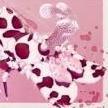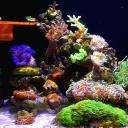-
Topics
-
Latest Update
-
0
Understanding Florist Bouquets
Flowers have been a universal symbol of love, gratitude, and celebration for centuries. Whether you're looking for a gift to express your feelings or simply want to brighten up your living space, florist bouquets offer a stunning and thoughtful solution. In this article, we will explore the art of florist bouquets, how to choose the perfect arrangement, and the best occasions for gifting flowers. Understanding Florist Bouquets A florist bouquet is a carefully arranged collection of flowers and greenery, designed to enhance beauty and evoke emotions. Professional florists use their expertise in color coordination, flower selection, and arrangement techniques to create eye-catching bouquets that convey the right message. Bouquets come in various styles, including: Hand-tied bouquets – A casual and natural-looking arrangement where flowers are tied together with ribbon or twine. Cascade bouquets – A waterfall effect design often used in weddings. Posy bouquets – Small, round arrangements perfect for handheld gifts. Basket arrangements – Flowers arranged in a basket, ideal for decorative purposes. Choosing the Perfect Bouquet Selecting the right florist bouquet depends on several factors, including the occasion, the recipient’s preferences, and the message you want to convey. Here are some tips to help you choose: Consider the Occasion Romantic gestures – Red roses symbolize love and passion, making them perfect for anniversaries and Valentine’s Day. Birthdays – Bright and cheerful flowers such as sunflowers, daisies, or tulips add joy to the celebration. Sympathy and condolences – White lilies and orchids express sympathy and remembrance. Congratulations and celebrations – Vibrant colors like yellow, orange, and pink symbolize happiness and success. Know the Meaning of Flowers Every flower has a symbolic meaning. For instance: Roses (Red: Love, White: Purity, Yellow: Friendship) Lilies (White: Sympathy, Pink: Prosperity) Carnations (Pink: Gratitude, Red: Admiration) Tulips (Various colors: Perfect love and happiness) Choose Seasonal Flowers Seasonal flowers are not only fresher but also more affordable. Spring bouquets often feature tulips and daffodils, while summer bouquets are filled with sunflowers and lilies. Consider the Bouquet’s Longevity Some flowers last longer than others. Orchids, carnations, and chrysanthemums are known for their long-lasting beauty. Popular Occasions for Gifting Florist Bouquets Florist bouquets make a great gift for various special moments, including: Weddings – Bouquets enhance the beauty of the ceremony and add elegance to the bride’s ensemble. Anniversaries – A romantic bouquet shows appreciation and love for your partner. Mother’s Day – Flowers like carnations and roses express gratitude and admiration. Get Well Soon – Bright and uplifting flowers bring comfort and Flower shop near me positivity to those who are unwell. Housewarming – A bouquet of fresh flowers is a thoughtful way to welcome someone to their new home. Caring for Your Florist Bouquet To ensure your bouquet stays fresh for as long as possible, follow these simple care tips: Trim the stems at an angle before placing them in water. Change the water every two days. Keep the flowers away from direct sunlight and extreme temperatures. Remove wilted flowers to extend the lifespan of the bouquet. Conclusion Florist bouquets are more than just floral arrangements; they are a Flower bouquet meaningful way to express emotions and create lasting memories. Whether you are celebrating a special occasion or simply want to brighten someone's day, choosing the right bouquet will make all the difference. Next time you visit a florist, take a moment to appreciate the artistry and thoughtfulness that goes into each arrangement. -
0
wts
Golden Millie - 20 Rainbow selago - 20 Prata open up 2 palm size big - 150 (FOC injured orange prata) Hellfire torch - 60 - 100 each Clam - 40 Big colony alveopora- 60 True Oct palm size big - 80 2 x big heads toxic green hammer - 40 Collection at cck Sent from my iPhone using Tapatalk -
1
-
1
WTS Jason Fox Raja rampage frag
Selling 3 head raja frag for $150 Pm if int Deal at east side Mother colony in last pic (not for sale) -
0
VIDEO] Anjali Arora Viral Video Full Video X nuk
CLICK HERE == WATCH NOW CLICK HERE == Download Now https://iyxwfree24.my.id/watch-streaming/?video=video-anjali-arora-viral-video-full--video-x Chudasi Indian Tiktoker Anjali Arora MMS video ko dekhe aur maza le. Anjali apne boyfriend ke sath kisi star ki tarah alag alag pose mein sex kar rahi hai. Anjali aur uska boyfriend masti mein alag alag style mein hardcore chudai kar rahe hai. Taange utha utha kar chudne mein ushe bahut anand aa Watch Anjali Arora Mms Viral Video video on xHamster, the largest HD sex tube site with tons of free Indian Desi & In Urdu movies! Anjali Arora Mms Viral Video video on xHamster, the largest HD sex tube site with tons of free Indian Desi & In Urdu movies! Get full video. 275 / 2. Favorite . Leave a comment. Share. About Watch Kacha Badam Fame Anjali Arora Fucks Hard. Mms Leaked. Watch Now. video on XFREEHD Now! - Free Hardcore video, anjali arora , anjali arora mms, kacha bad mms, kachcha badam mms, anjali arora ki chudai, Teen, Celebrity, 480P, Sex 38,588 anjali arora viral full video FREE videos found on XVIDEOS for this search. Language: Your location: anjali arora viral full video (38,588 results) Report. Sort by : Relevance. Relevance; Newest; Rating; Length; XVideos.com - the best free videos on internet, 100% free. Anjali arora sex video is the latest village Indian mms that you should watch out! She felt sexually aroused before her lover came and *expletive* her . For sure, you will admire her boobies, hot ass, and *expletive* ! Her lover *expletive* her in all sort of sex position. FPO XXX Rajpreet4264 Anjali arora Full *expletive* Video Viral xxx free. video contains adult scenes with hot pornstar! SEX GAMES; AI JERK OFF; Sign up; Log in; Search. Home; Latest Videos; Top Rated; Most Popular Anjali Arora MMS viral video kacha badam new XXX 81% 8 324 448. 14:38. Anjali Arora New Viral Video Indian 78% 1 000 079. 1:10 HD 37,645 anjali arora viral mms full video FREE videos found on XVIDEOS for this search. Language: Your location: USA Straight. Login Join for FREE Premium. Big Desi Bhabhi Sex Mms Goes Viral - Indian Tube Video 2 min. 2 min Rajeev400330 - 720p. New Delhi University Girls mms viral video 6 min. 6 min Rerajporn - Watch Anjali Arora Viral videos for free, here on Pornhub.com. Discover the growing collection of high quality Most Relevant XXX movies and clips. No other sex tube is more popular and features more Anjali Arora Viral scenes than Pornhub! Browse through our impressive selection of videos in HD quality on any device you own. FPO XXX kenyu1234 Anjali Arora New Viral Video Indian free. video contains Asian, Big Natural , Amateur, Indian adult scenes with hot pornstar! SEX GAMES; LIVE CAMS; Sign up; Log in; Search. Anjali Arora New Viral Video Indian. Add comment Comments 1 comment no photo-1226 +1-1 amitamit111990 May 13, 2024 Mast maal hai. Edit comment. Watch Anjali Arora Mms Viral Video video on xHamster, the largest HD sex tube site with tons of free Indian Desi & In Hindi movies!
-






Recommended Posts
Join the conversation
You can post now and register later. If you have an account, sign in now to post with your account.